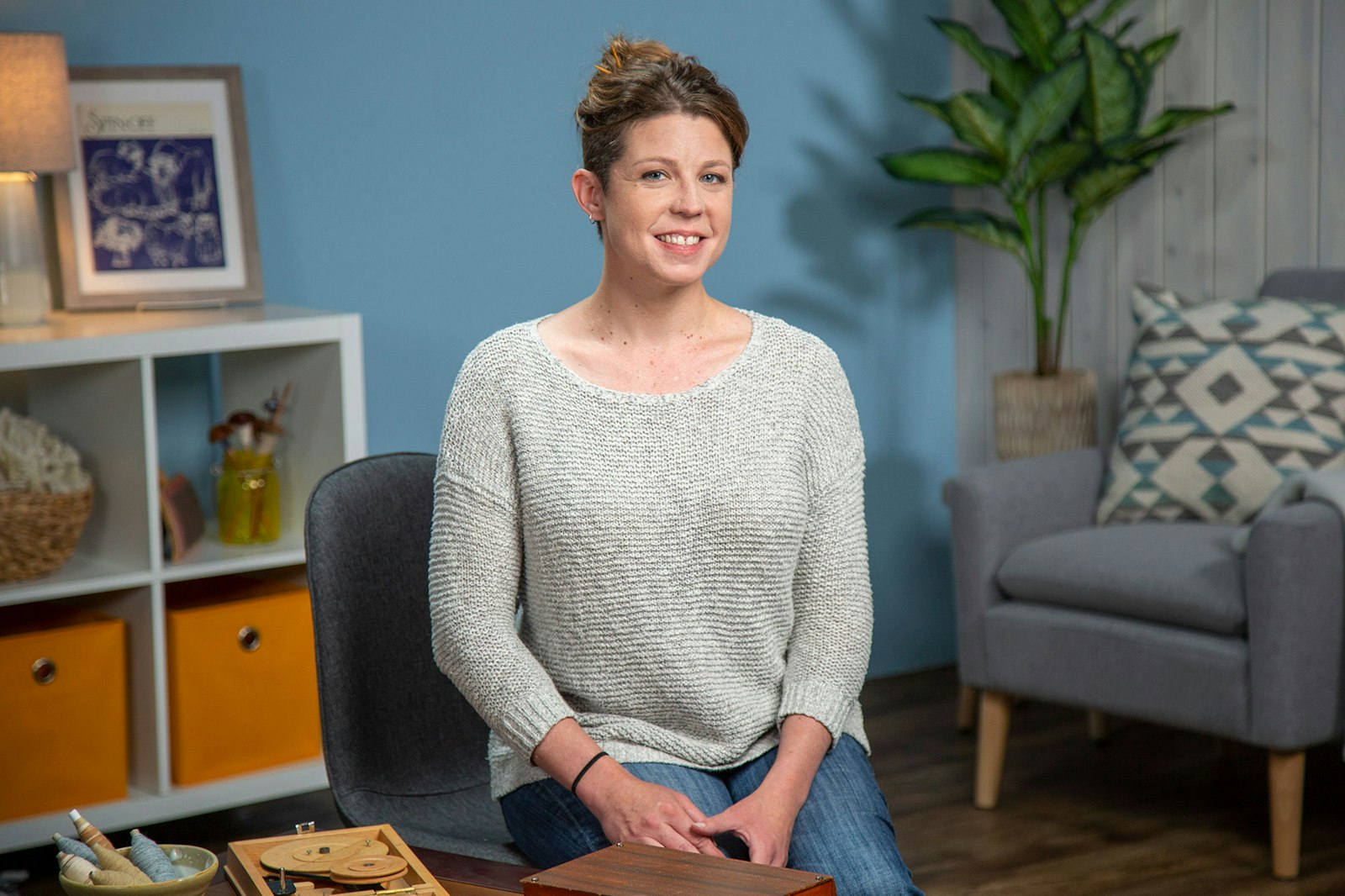Have you met a fellow spinner so charming and knowledgeable that you could listen to them all day? That’s the way I felt as I watched our Spin Off editor, Kate Larson, during the filming of her charkha course.
When we started this video project, I didn’t know much about the charkha, but with each passing moment, I fell more in love with this wheel and its possibilities. I also felt spoiled, knowing I was seeing years of research and information come together into a single video resource I could watch again and again.
As we finished filming, I was amazed at the number of tips and helpful guidance packed into almost two hours of video. Here are three of my favorite lessons from watching Kate spin on a charkha.
1. Spindles on a traditional Indian charkha don’t always arrive ready to go.
When your charkha first arrives (or even if you’ve had one for a while), you may need to take a few steps to prepare your spindles.
Often, for transporting, the leather washer is put on the outside to hold the metal yarn-stop ring in place, but this isn’t the final setup. To get these elements in order, you’ll want to remove them and put them back on the spindle so that the leather washer is next to the spindle pulley. Then place the yarn stop so it's outside the spindle holder where the singles are stored.
After that, there is still one final step that helps tremendously: gluing the metal yarn stop in place. Gluing provides a solid place where you can build your cop as you are spinning, and this one step can make all the difference.
You may find that one of your spindles arrives ready to go and glued, but be sure to take these steps to adjust and glue your remaining spindles.
Here is Kate to show you how to make these adjustments and glue your spindles.
Embedded content: https://www.youtube.com/watch?v=wFnFSwtv8SY
2. Cotton sliver has a strong directional nature.
Sliver has a very strong directional nature because of the way it’s mechanically produced. One side might create a lumpy, bumpy yarn that breaks constantly, and the other side will spin beautifully. If you are having trouble, one of the first things to do is stop and try the other end of your sliver. Even practiced charkha spinners get it wrong sometimes, so don’t worry if you use this tip often.
 Cotton sliver has a strong directional nature, and one side will spin better than the other.
Cotton sliver has a strong directional nature, and one side will spin better than the other.
3. Sample to better see your twist.
Sampling can make a world of difference and help you adjust the yarn you are spinning and build consistency. With a charkha single, it can also be an effective way to see your twist.
Using plyback samples, you can see the twist and adjust how much extra twist you add until you get the yarn you want. Then record details—such as fiber used, drafting method, and the number of extra rotations—to accompany your plyback sample whenever you want to come back and create that yarn.
 Plyback samples can be an effective way to see your twist.
Plyback samples can be an effective way to see your twist.
These tips, along with many others, made spinning on a charkha feel so possible, and I remarked to Kate that I thought I could pick up a charkha today and start spinning.
Whether you are like me and are new to charkha or have tried it in the past, I hope you'll join Kate and connect to the tradition of charkha spinning in her new course, How to Spin on a Charkha.
Happy spinning,
Tiffany

